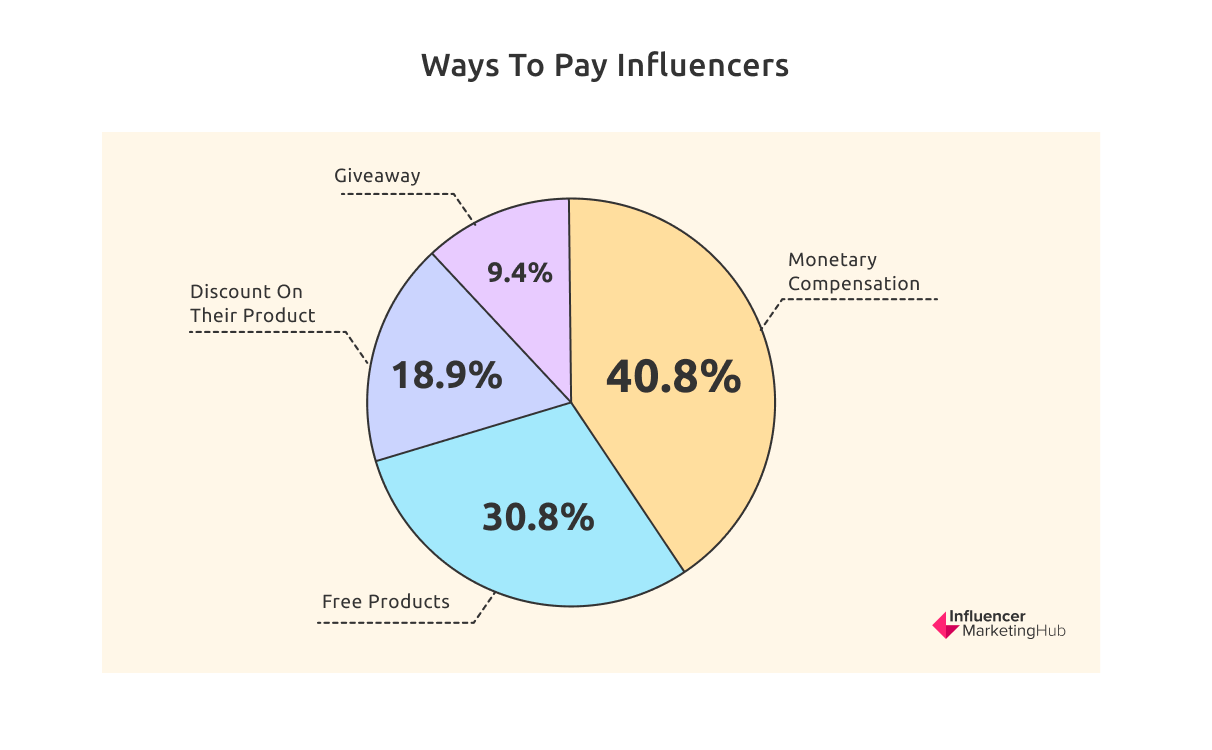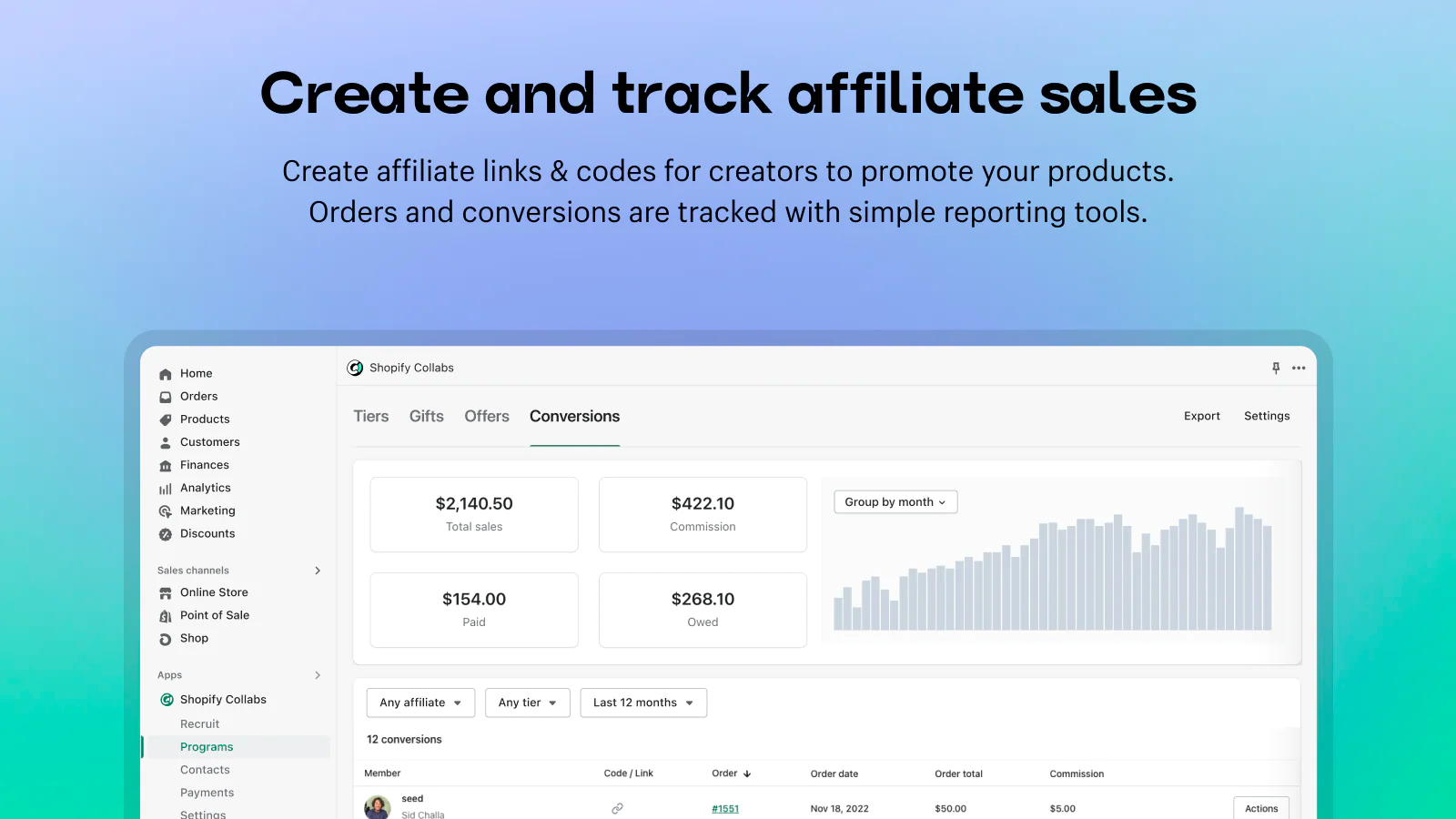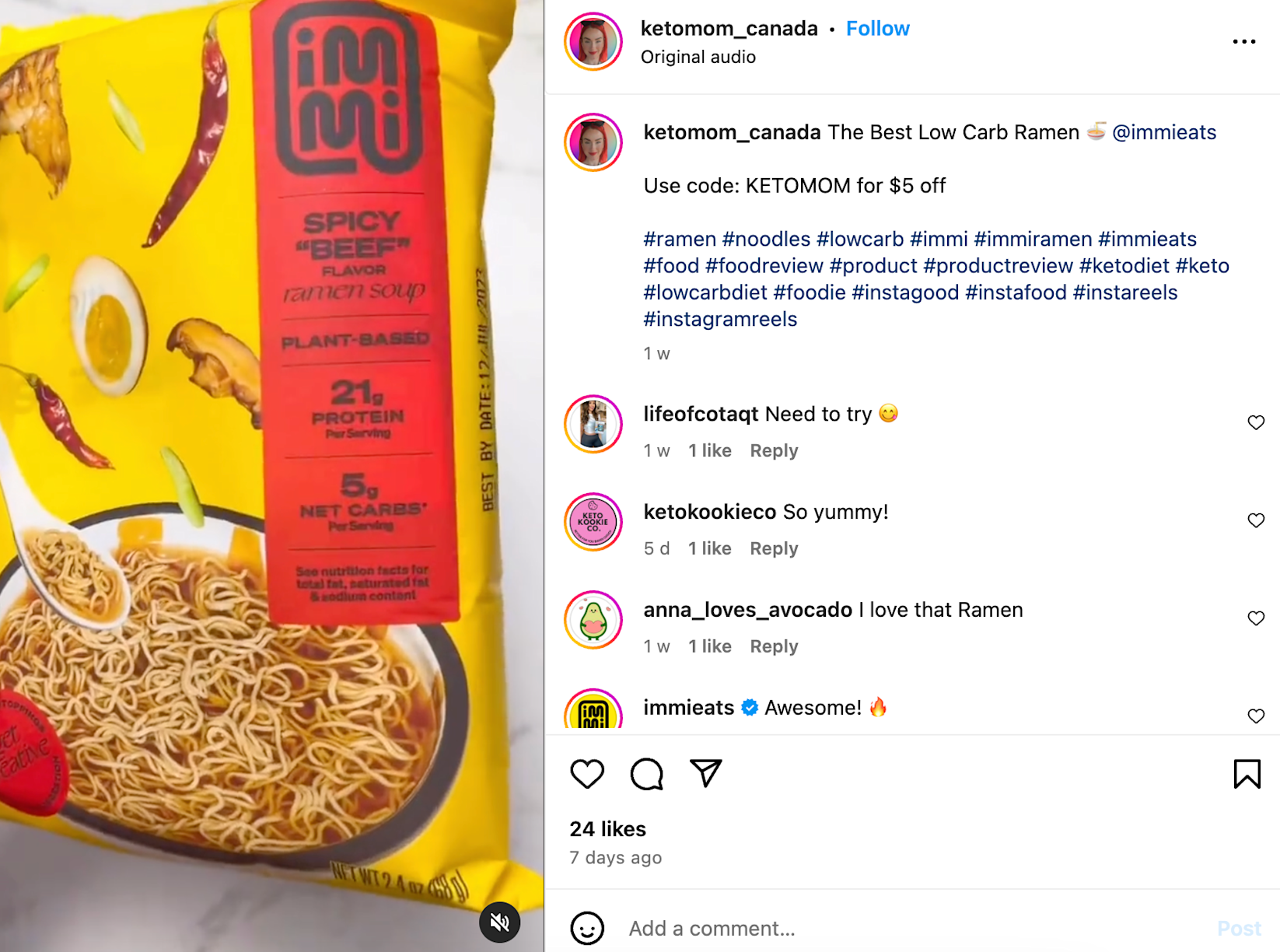Before brands sought multimillion dollar endorsement deals with celebrities and athletes, companies used characters to get buyers to sympathize with them and, in turn, their products. That was followed by a second wave of celebrity endorsements as a way for buyers to connect the dots between brand, trust, and recommendations by public figures.
Celebrities and athletes, while still extremely popular today, now have to compete with the rise of “ordinary” personalities, i.e. the influencer.
Influencers are character-like because they still perform the role of someone in an ad on a social media platform but they are, and very well could be, your neighbors. The only difference? They have hundreds of thousands of followers online.
If you want to lean into the world of influencer marketing but aren’t sure where to start or had poor returns in the past, you’re in the right place. This guide shares an effective influencer marketing strategy to get the ball rolling, complete with examples of successful influencer marketing campaigns to draw inspiration from.
Table of Contents:
- What is influencer marketing?
- How does influencer marketing work?
- Is influencer marketing effective?
- Challenges of influencer marketing
- How to create an influencer marketing strategy
- Examples of influencer marketing campaigns
What is influencer marketing?
Influencer marketing is a collaboration between a brand and someone who has an active social media presence. Ecommerce brands pay online influencers or provide free samples in order to increase brand awareness, create user-generated content, and drive sales.
How does influencer marketing work?
Influencer marketing is an accelerated type of word of mouth marketing. A brand pays an online influencer (also known as a brand ambassador) to post about their products or services in exchange for a flat fee, free sample, or hefty discount.
Once the content has been approved by the merchant, the influencer publishes the sponsored post across their social media platforms. The goal of influencer marketing is typically to drive traffic back to the merchant’s ecommerce site.
Is influencer marketing effective?
The influencer marketing industry is worth a reported $24 billion with every social platform bringing in influencers at some point. The industry has become so important to so many brands, namely in the fashion and lifestyle industries, but also in food and electronic goods too, as buyer behaviors have evolved.
Customers, once relying heavily on advertising and then consumer reviews, have adapted their habits to base purchases on reviews and endorsements from relatable, reliable, and trustworthy sources by way of the influencer. Seeing an influencer in one’s feed seems more reliable to a consumer because they have curated their feeds to reflect, or even depict in ambition, the life they have.
Online influencers have now become a key part of any purchasing decision—so much so:
- One in four marketers have worked with influencers
- 36% of marketers think influencer content outperforms brand-created content on social media
- Six in 10 marketers plan to increase their influencer marketing budget in the coming year
“Influencers have the unique ability to create relatable content that resonates with their followers, making their endorsements feel more personal and trustworthy,” says Kate Ross, influencer marketing specialist at Irresistible Me. “This has been instrumental in enhancing our brand visibility, driving engagement, and ultimately, increasing sales.
“For example, campaigns we've run with influencers have directly contributed to spikes in website traffic and sales, with some campaigns generating a 20% increase in sales during the campaign period.”

Irresistible Me partners with this Instagram influencer on a sponsored Reel.
Challenges of influencer marketing
Influencers have to abide by some rules to ensure consumers are not being misled. In 2017, the Federal Trade Commission in the U.S. released a set of guidelines for social media influencers to avoid ambiguity. Hashtags like #thanks, #collab, #sp, #spon, or #ambassador commonly frequent Instagram captions of influencers. These terms make it obvious that the influencer is being monetarily compensated to promote a product or service.
Plus as the demand for influencers has gone up with more brands tapping into this marketing strategy, so too have the costs of an influencer. WIRED reports that in 2016, an endorsement from a top-tier influencer would cost somewhere between $5,000 to $10,000. Now some brands are expected to pay well over $100,000 for the same placement.
There’s also the issue of authenticity. Anyone can buy fake followers to appear more influential than they really are. It’s more prevalent than you might think—some 9.5% of all Instagram accounts are bots, and one in four social media influencers have admitted to buying followers.
“One of the biggest challenges we face is ensuring the authenticity of the influencer’s engagement and follower base,” Kate Ross says. “With the rise of influencer marketing, the market has seen an increase in influencers with artificially inflated metrics. To combat this, we’ve invested in advanced analytics tools to scrutinize influencer metrics more deeply and have developed a vetting process that includes trial collaborations before committing to longer term partnerships.”
How to create an influencer marketing strategy
1. Choose influencers to partner with
More than 50 million people consider themselves to be an influencer, but only a small percentage will be the right fit for your business. The key to a successful influencer campaign is to work with social influencers whose target audience overlaps yours. There’s not much point in promoting anti-aging skincare to a social media influencer followed by Gen Zers—even if they do talk about beauty.
To find influencers you can add to your shortlist:
- Use Shopify Collabs. Shopify’s native influencer marketing platform has its own database of over a million influencers that are actively looking for brand sponsorships. Evaluate a creator’s engagement rate, follower count, and growth rate without leaving your Shopify dashboard.
- Ask your customers. In your post purchase email survey, ask customers which influencers they follow on social media. Those mentioned most frequently are worth exploring a partnership with.
- Look at those already posting user-generated content. These people are customers who know and love your brand—two components of the perfect influencer. Get them posting about you more regularly with an incentive like a hefty product discount or free sample.
Gareth Newman says thatBlakely Clothing finds creators from influencer outreach across TikTok and Instagram. “We also hold various community events so this allows us to meet creators in person to develop relationships,” Gareth says. “We can also use influencer marketing platforms such as Shopify Collabs to keep track of our community and create new campaigns with them.”
It’s not just real people that are up for grabs; the industry is being rocked by a new type of artificial intelligence technology: the virtual influencer. These people aren’t actual people—more computer-generated graphics that we’ve given personalities (and social media profiles) to. One report found that 58% of people already follow at least one of these computer-generated influencers, hence why 60.4% of brands have worked with virtual influencers in the past year.
Real people or not, brand influencers are usually valued on followers—the more people who follow an account, the more influence they’re perceived to have. While some brands partner with content creators with an established audience, others seek out “micro influencers”: social media personalities with smaller followers counts, some even as low as a few thousand. Their content is often around a particular niche audience, passion, or community.
What’s remarkable about the use of nano influencers is that they can have an engagement rate of nearly triple that of mega influencers doing something similar.
Not only are micro influencers more cost-effective for brands, but also using them gives a brand a slight edge in credibility and authority. Their chosen representative is more likely to be authentic and representative of the audience they are trying to capture as buyers, providing a potentially better influencer marketing ROI.
2. Plan the campaign
Before you reach out to influencers with your sponsored content proposal, think about what you can offer them in return. A report by Influencer Marketing Hub found that monetary compensation was the most popular way to compensate an influencer, followed by free products, discounts, and sponsored giveaways.
Don’t limit yourself to just one compensation model. Different influencers respond best to different models—it depends on the goals they have for their own business. Someone who wants to become a full-time creator will likely go for money over free products.
According to Ben Beck, marketing director for Tortuga Backpacks, one of the biggest influencer marketing challenges is “finding a balance between deliverables and costs.
“We have overcome this by working with enough influencers to develop a few different offers that make it a win-win for everyone based on the size of their platform,” Ben says. “For some we just send free travel products, while for others we have affiliate and CPM commission opportunities.”

Monetary compensation is the most popular way to pay influencers.
3. Collaborate with influencers on branded content
Ecommerce marketers run into issues when they try to dictate what type of sponsored content an influencer should create.
Granted, you know your product best and should be sending a fact sheet to make sure your products are being marketed accurately—but it’s an influencer whose reputation is on the line. They’ve likely spent years building an audience that trusts them. That hard work could be shattered with a single post that goes against their own brand values or style.
Striking the right balance is a challenge for many marketers as Jake Munday, co-founder and CEO of Custom Neon, says: “Ensuring brand alignment has proven to be a challenge. Sometimes, an influencer's content or approach may deviate from our brand's tone.
“We have strengthened our collaborating policy in response,” Jake says. “In order to ensure that influencers get our messaging and guiding values, we now conduct thorough briefings and follow strict requirements. Maintaining alignment during the campaign has been largely dependent on regular communication.”
Whether you’re working on a sponsored TikTok video or Instagram Story, detail the approval process (with timelines, if you’re launching a multi-influencer marketing campaign) in your contract. That gives the influencer free reign to produce branded content for their audience, but you get the final say. Anything that doesn’t fit your brand can be struck out before the influencer’s post goes live.
4. Track results by influencer
You’ve launched your influencer marketing campaign and have a bunch of happy influencers chatting about your products online. The real question is: when the purchase journey is more convoluted than ever and the average shopping experience involves multiple touchpoints, how can you accurately attribute sales to a particular influencer?
To confirm that your influencer marketing efforts are meeting their intended goals, monitor:
- UTM parameters. Give influencers their own unique links to use when posting branded content, then filter their parameters in Google Analytics to see how their audience interacts with your online store.
- Coupon codes. Create unique coupon codes for each influencer to share alongside their sponsored post. After the campaign goes live, monitor coupon usage to attribute sales to each online influencer.
- Influencer marketing tools. Shopify Collabs presents influencer analytics to determine a campaign’s success. See how much revenue an influencer has generated, their commission, and their payouts to track results and keep influencers happy with timely payments.
“Currently, we can directly attribute 30% of sales that come from our affiliate program,” says Tortuga Travel Backpacks’ Ben Beck. “We believe it is even higher than this because a lot of people come directly to our website, which influencer's word of mouth helps with although it is hard to track directly.

Shopify Collabs can track influencer sales.
“We use Shopify Plus’s integrated marketing tools and third-party applications to streamline affiliate marketing, tracking sales generated from specific influencers with precision,” says Kate Ross, influencer marketing specialist at Irresistible Me. “This allows us to assess the ROI of our influencer partnerships accurately and adjust our strategies accordingly.
“Through our influencer campaigns, we’ve seen significant results in terms of sales and brand growth. For instance, a recent campaign with a group of carefully selected influencers resulted in a 30% increase in sales from the affiliate links used during the campaign period.”
Examples of influencer marketing campaigns
Duradry
Duradry doesn’t exactly operate in the sexiest of industries. It sells deodorant made from scientifically-backed ingredients that reduce sweat. At first, it might not sound like Duradry is the ideal candidate for a successful influencer marketing campaign, but the DTC brand enlisted the help of Shopify Collabs to combat ever-increasing advertising costs and reduce its customer acquisition costs (CAC).
Since using Shopify Collabs, Duradry has built a community of over 250+ influencers who regularly generate affiliate sales. These influencers have driven $50,000 in product sales and helped Duradry decrease CAC by 29%.

Duradry’s brand profile on Shopify Collabs.
Moonboon
Moonboon is an online retailer that sells functional sleep accessories for babies. All of its products are sustainably sourced and naturally produced. Who better than parent influencers to share the brand’s story on social media?
Moonboon created its own influencer program with Shopify Collabs. With just a signup page on its website for creators to apply, Moonboon has scaled the process of onboarding new creators by more than 400%. It now has over 300 creators in the influencer program who have driven over $1 million in product sales, giving Moonboon an average influencer marketing ROI of 6.5x.
Shopify Collabs has simplified profiling and signing of new creators,” says Moonboon’s brand director Rovert V. S. Preuss. “The intuitive dashboard gives us a seamless overview of the affiliate program and general sales tracking. We are crazy about the simplicity of the tool and work on the platform daily. It is an incredible tool that helps us grow and scale our tactical lower funnel work with creators who are passionate about our brand and products.”

Moonboon’s results of its Shopify Collabs-powered influencer program.
immi
If there’s one industry that thrives on influencer marketing, it’s the food scene. People love to share photos of what they’re eating. Ramen brand immi took advantage of this with its own influencer campaign that sends free products to gather feedback from influencers directly in their Shopify Collabs dashboard.
Creators who like the samples can join the Ram Fam—immi’s influencer program that rewards people who post about its ramen on social media with commission. The program now boasts over 430 brand ambassadors who have driven 4,400+ product sales.
Caption: Keto Mom Canada is an Instagram influencer who is part of immi’s influencer program.

Keto Mom Canada is an Instagram influencer who is part of immi’s influencer program.
Turn sponsored influencer posts into sales
People buy from people they trust. While you build your own audience, get a headstart by enlisting the help of the right influencers—social media users who already have your target audience’s attention and hang on their every word.
From choosing the right partners to tracking the results of your influencer collaborations, the social media users you enlist the help of makes a world of difference. These people will be representing your brand in front of impressionable audiences.
Influencer Marketing FAQS
What is an example of influencer marketing?
HelloFresh has an influencer marketing program that incentivizes people to promote its meal delivery kits on social media. If an influencer promotes its products and their followers buy, HelloFresh pays commission.
What type of marketing is influencers?
Influencers fall under the social media marketing industry. Brands partner with influencers to create sponsored content that is promoted on social media channels such as Facebook, Instagram, YouTube, TikTok, and Twitch.
Does influencer marketing really work?
One in five people between the ages of 18 and 25 have purchased something off the back of an influencer’s recommendation, making it a valuable marketing tool for businesses of all sizes.
Is influencer marketing worth it?
Influencer marketing is worth investing in if your goal is to drive sales from social media. Influencers have a loyal audience who trust the recommendations they provide. If your product gets a glowing review, you could convert a percentage of their followers into customers.






